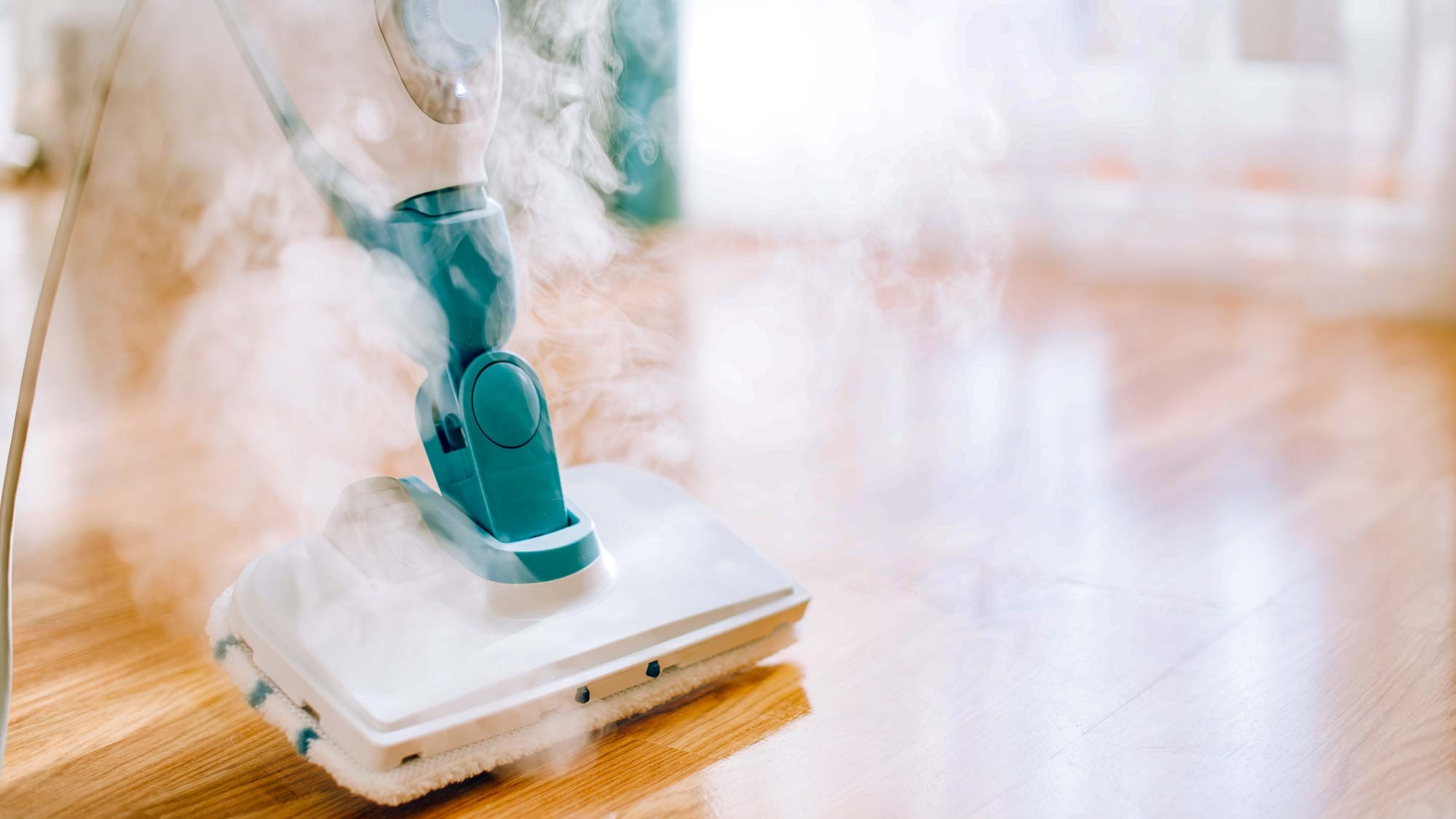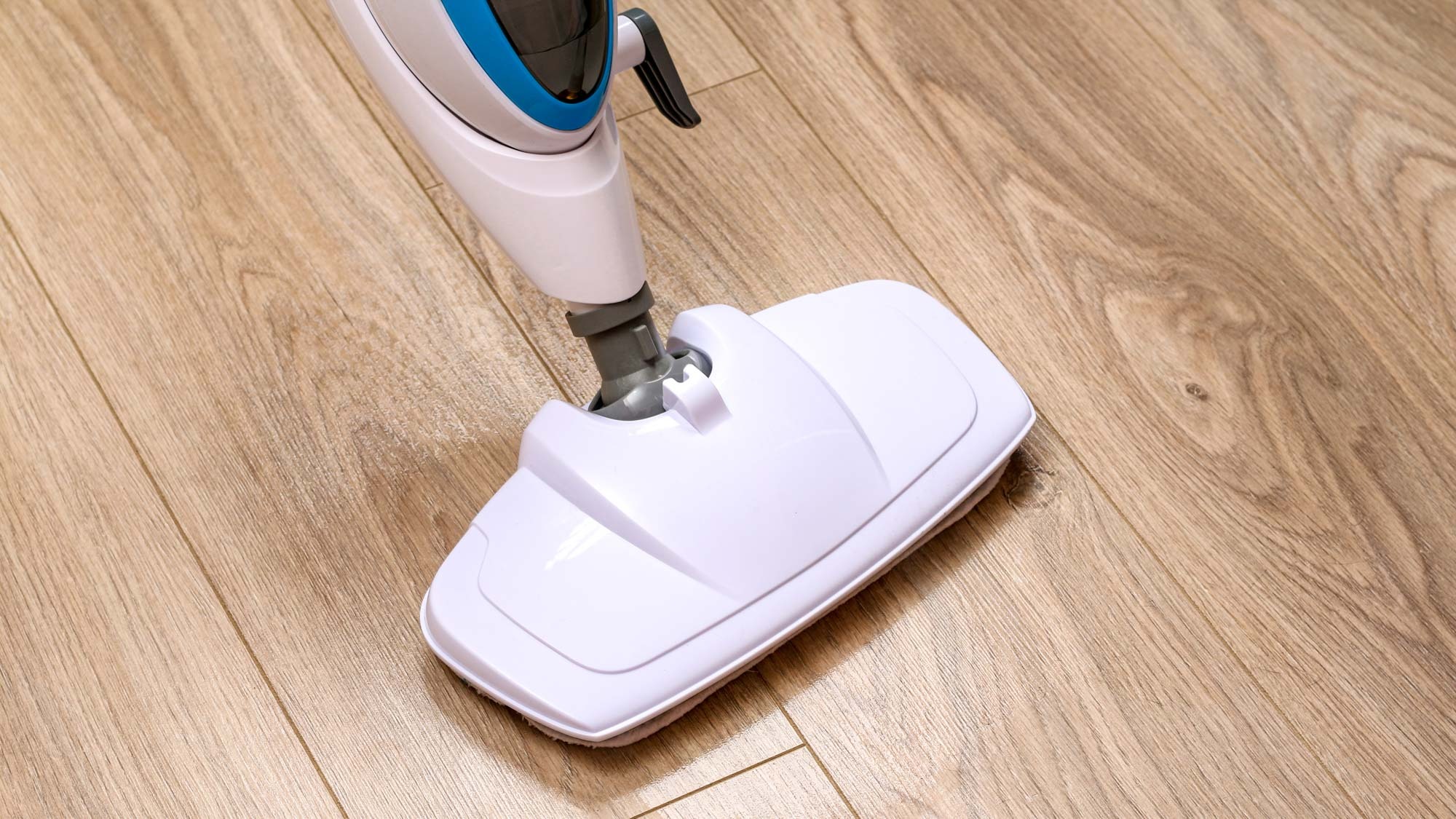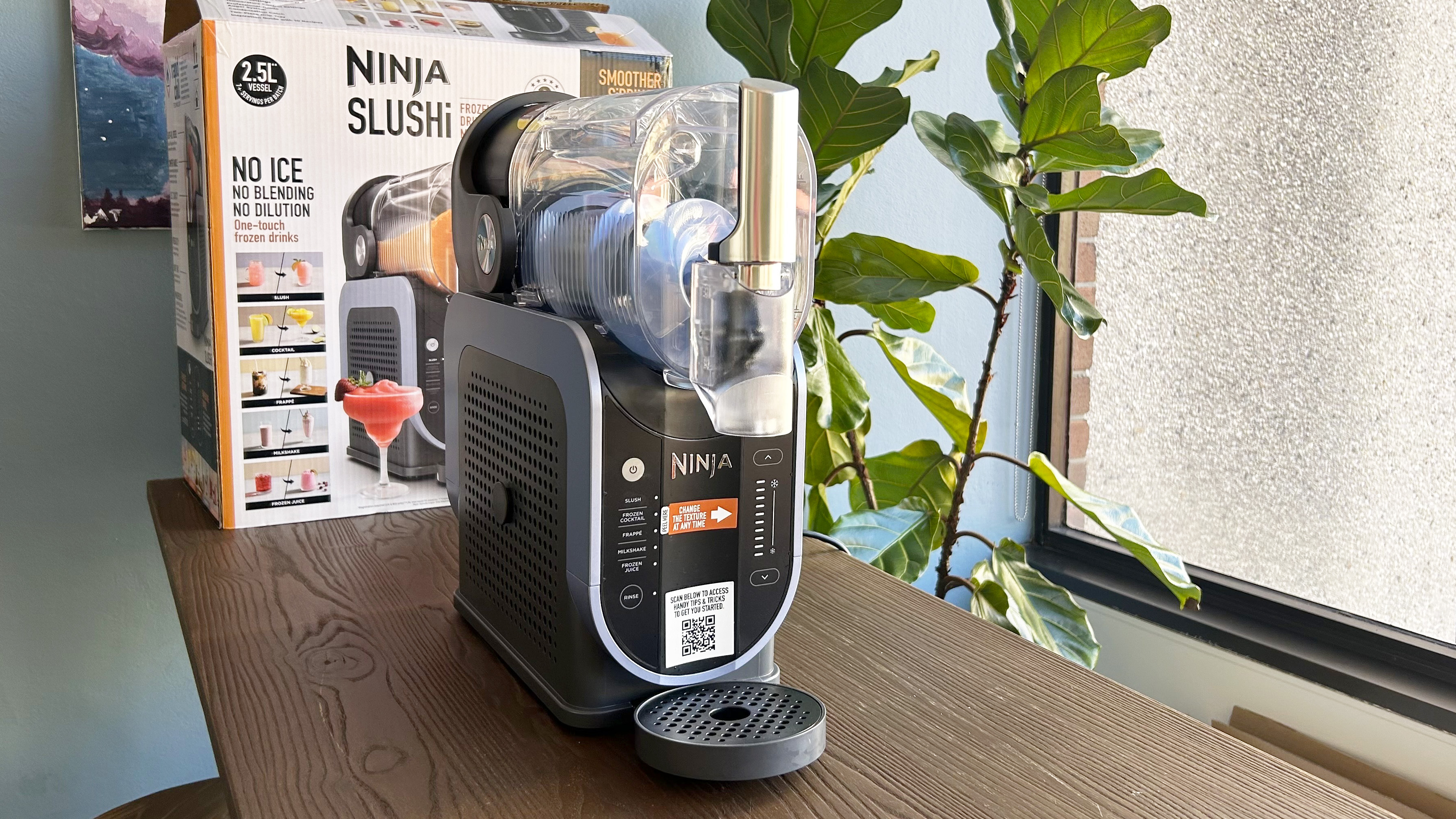A steam mop damaged my floors — don't let this happen to you
Before you buy a steam mop, read this first

We all want to make our housework quick and less of a chore. As a Homes writer, I’ve probably tried every cleaning gadget, DIY product, or ‘miracle’ hack imaginable to see if they really can cut down the time it takes to clean every room of your home.
Having laminate flooring throughout my home meant that I was often mopping it to keep it dust-free and spotless. The steam mop (in theory), offered the convenience and power my floor care routine was missing. Firstly, using one of these meant I didn’t have to always fill up a bucket with hot, soapy water, nor continuously wring out a wet mop. The fact that it heats up the water reservoir in seconds would make it quick to use, and tidying up would be a breeze too. No more emptying out dirty water, or worrying about the harsh chemicals on my floor (you don’t need to use any).
And it wasn’t just the time-saving benefits that won me over. There are advantages to cleaning with steam, too. Steam cleaning is known to be a natural and effective way to remove household bacteria. Once the water reaches 175-degrees F, it will sanitize surfaces effectively, and most steam mops can reach up to 250-degrees F — far superior to the mop and bucket. I was convinced this would be a worthwhile investment. But, I soon discovered that when it comes to laminate floors, a steam mop is not always the best choice.
After a year of use, I noticed certain areas of the floor had raised, warped or lost its original grain color
The steamer I’d purchased stated that it was suitable for carpet and various floor types, including hardwood, laminate floors and tile. At first, I enjoyed the convenience and ease of use the steam mop provided. It was able to clean my dining room floor well, leaving it spotless and sanitized in no time.
But after a year of use, I noticed certain areas of the floor had raised, warped or lost its original grain color. Despite reducing the steam temperature to the lowest setting, it failed to make a difference. To my dismay, the moisture from the steam had caused irreparable damage to my floor over time. So much so, that we had to replace the entire floor with luxury vinyl tile, which is far more durable to extreme temperatures.

While some manufacturers claim that sealed floors won’t be damaged if the steam cleaner in question is used at low or medium pressure, I would not advise using one on wooden or laminate flooring. Laminate is usually made from a compressed fiber/particleboard which may not cope well with steam.
Similarly, a hardwood floor may have small cracks that you can’t see, which will only worsen if steam is forced into them. If not careful, steam cleaning could cause swelling, warping, and joint line separation on these surfaces. Depending on the model you buy, a steam mop is best suited for sealed surfaces such as vinyl or linoleum flooring, or ceramic, marble or porcelain tiles.
In the meantime, I’m sticking with the good old-fashioned, mop and bucket. It may take longer than a steam mop, but at least it won’t cost me a new floor. So before you buy a steam mop, do your research, check the manufacturer's guidance to see if it’s suitable, and don’t let this happen to you!
If you have scratches on your floor, be sure to check out our guide on how to fix scratched wood floors to make them look like new. Plus, if you want more floor cleaning tips, check out how to clean hardwood flooring without damaging them or you might want one of the best vacuum cleaners.
Sign up to get the BEST of Tom's Guide direct to your inbox.
Get instant access to breaking news, the hottest reviews, great deals and helpful tips.

As the Homes Content Editor, Cynthia Lawrence covers all things homes, interior decorating, and garden-related. She has a wealth of editorial experience testing the latest, ‘must-have’ home appliances, writing buying guides and the handy ‘how to’ features.
Her work has been published in various titles including, T3, Top Ten Reviews, Ideal Home, Real Homes, Livingetc. and House Beautiful, amongst many.
With a rather unhealthy obsession for all things homes and interiors, she also has an interior design blog for style inspiration and savvy storage solutions (get rid of that clutter!). When she’s not testing cool products, she’ll be searching online for more decor ideas to spruce up her family home or looking for a great bargain!
